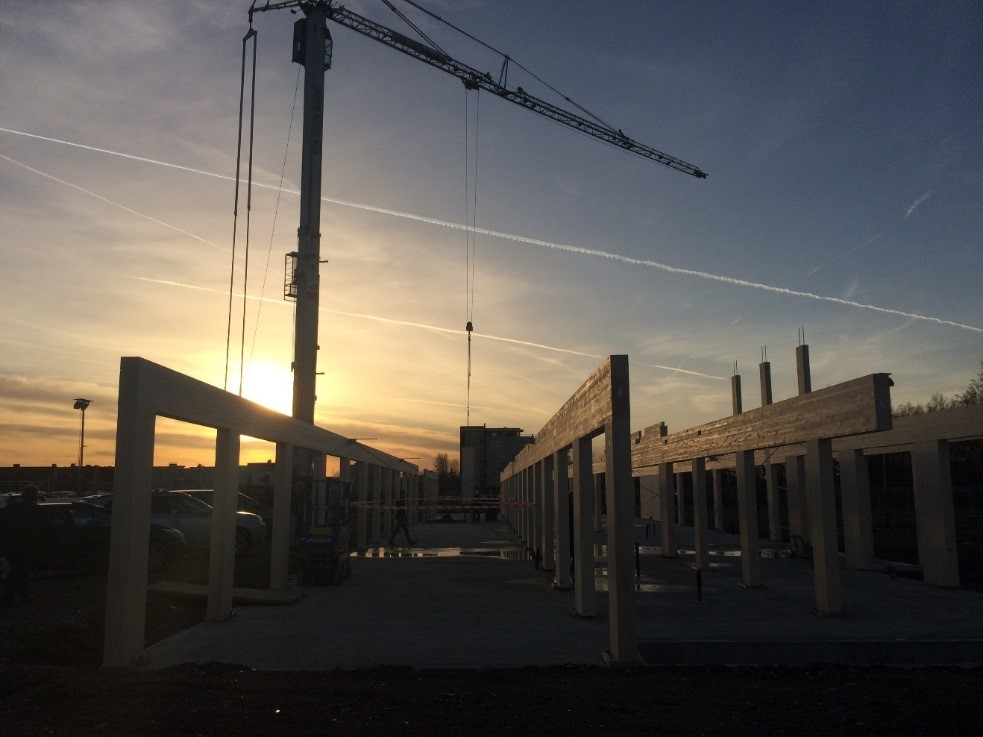The European GNSS Agency (GSA) helps lay the ceremonial first brick to officially commence construction on the Galileo Reference Centre (GRC) in Noordwijk, the Netherlands.
With the laying of the ceremonial first brick, the construction of the  Galileo Reference Centre (GRC) has officially commenced. The First Brick Ceremony, a Dutch ground breaking tradition, was held 24 November in Noordwijk, the future home of the GRC.
Galileo Reference Centre (GRC) has officially commenced. The First Brick Ceremony, a Dutch ground breaking tradition, was held 24 November in Noordwijk, the future home of the GRC.
"With four satellites launched last week, the countdown to Galileo Initial Services has started,” said European Commission DG Internal Market, Industry, Entrepreneurship and SMEs Programme Manager for Galileo and EGNOS, Paul Flament. “The GRC will help ensure that Galileo users are provided with very high quality signals that can be used by an array of new navigation applications.”
GSA Galileo Operations and Maintenance Manager, Davide Castellazzi, added to this, noting that the GRC will play an important role in the Galileo service provision. “The GRC is a cornerstone of the Galileo service provision, from Initial Services to full operational capability and beyond,” he said. “It will be instrumental in monitoring the performance of the system and the service operator, and serves as the door through which Member States can contribute to these tasks.”
“Satellite systems like Galileo are opening up new opportunities in every sector – from water to mobility, energy, agriculture, climate change and food security – and the Netherlands is eager to take full advantage of these opportunities,” said Netherlands Space Office (NSO) Director Ger Nieuwpoort. “This is why the NSO is dedicated to stimulating the use of satellite navigation within government processes and why I am happy to join the European space community here in the Netherlands to officially start building the GRC.” Through a commission by the Dutch Ministry of Infrastructure and the Environment, the NSO serves as project manager for the GRC construction process.
An important facility in the Galileo programme
Announced at last year’s European Space Solutions Conference in The Hague, the GRC’s core mission is to perform independent monitoring of and reporting on Galileo’s performance. Operated by the GSA, the GRC provides the Agency with an independent system to evaluate the performance of the Galileo Services and, consequently, the Galileo Service Operator, and the quality of the signals in space.
The Noordwijk facility, set to become operational in 2017, will actively integrate contributions from the EU Member States, Norway and Switzerland. The facility is charged with generating performance evaluation products, performing dedicated campaign-based analyses, and reporting on their findings.
“By providing the building for the GRC, the Netherlands underlines the importance it attaches to the Galileo programme and the Noordwijk space cluster,” said Dutch Ministry of Infrastructure and the Environment Director of International Affairs Bart van Bolhuis. He also stressed the excellent cooperation between all the parties involved in the project, including the European Commission, the GSA, the European Space Agency (ESA), the municipality of Noordwijk and various government organisations. “This coordinated effort has resulted in a relatively short definition phase for the building and a rapid start of the building activities,” he said.
“The GSA appreciates the efforts made by the Netherlands to ensure a state-of-the-art GRC building that provides excellent working conditions and is capable of handling the tasks entrusted to it,” added Castellazzi. “We look forward to making use of the new building soon.”
The GRC in Brief
|
The Galileo Services Operator
The Galileo Services Operator (GSOp), under a contract with the GSA, will operate and maintain the Galileo global component. This includes ensuring that the core Galileo services (Open Service, Commercial Service and Public Regulated Service) are provided in compliance with all performance requirements.
Media note: This feature can be republished without charge provided the European GNSS Agency (GSA) is acknowledged as the source at the top or the bottom of the story. You must request permission before you use any of the photographs on the site. If you republish, we would be grateful if you could link back to the GSA website (http://www.gsa.europa.eu).